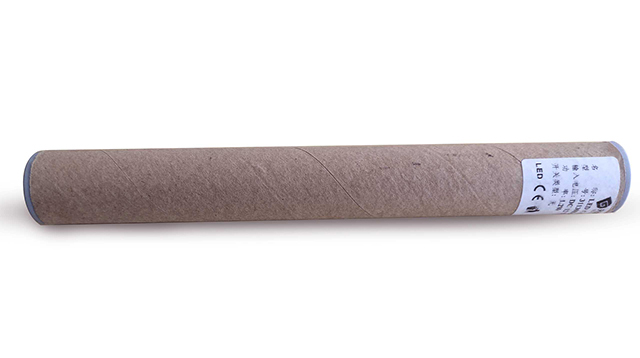Shipment is a major step in global trade. The shipment rate can be occasionally more expensive than the price of shipped goods. The LED shelf light is a typical example of such goods. It is costly if there is damage caused during the shipment, not only the product itself but the shipment cost and time it takes for suppliers to ship another goods for the demage replacement. It is extremely true for LED shelf lighting fixture, which usually come with various sizes, especailly the length: from less than 1 meter to over 2 meters. Then how suppliers pack the light strip up and send them to you safely ?
The package of LED shelf lighting
LED shelf lighting is made of four majoy parts: aluminum light channel, light beam strip, diffuser and the end caps. The channel is the part that is easiest to damage for its aluminum-made ( An easily-twisted mental materials). Moreover, The light strip will receive much impact for external forces Therefore, there is a high demands for the hardness of the LED shelf lighting package.
There are some companies may not pay attention to the package harness because it is a bit pricy compared to other packages. Before shipment, to confirm with your supplier on the package details to make sure the package can protect your goods from damage.
For example, we usually pack the LED shelf light with cylindrical package ( as below picture shown), which is made from two layers of kraft cardboard, a material that has great harness.
Are there any elements help to protect the shipped LED shelf light ?
Besides the materials of the package, there is other request for the package: the thickness of the package. The harness of kraft cardboard is helpful to protecting lighting fixture. But there is a variety of external forces that may caused good damages. Therefore, its thickness is another important factor that helps to protect the shelf light strip. For instance, we usually pack ready-to-ship LED shelf light with the thickness of 3mm, which is proven to effectively reduce the possibility of damage during the shipment and keep overall weigh of the goods from being overweighed that may incease the shipment fee.
Does it completely eliminate product damage?
Oversea shipments is a complicated process: transportation to port, customs clearance, loading onto the ship, ocean transit, unloading at destination port, transportation to final destination. During this process, there are many factors that may cause damages, especially rough handling, environmental factors, etc. Although kraft cardboard made package can help to reduce product damages, but it is impossible to eliminate it. But it does help to lower the risk of damage.
Are there any things else can help to lower the risk of damage ?
1. Proper Packaging
Confirm the details of packageing (like the above we mentioned) and request your supplier to add more protective padding like bubble wrap, foam, or air cushions. Moreover, consign your agent(if you have one) to check the goods, ensuring all packages are securely sealed with strong adhesive tape or straps to prevent them from opening during transit.
2. Labeling and Documentation
Clear Labeling: Use clear and visible labels indicating handling instructions such as “Fragile,” “This Side Up,” or “Handle with Care.”
Detailed Documentation: Provide detailed packing lists and handling instructions to all parties involved in the shipping process.
3. Containerization
Use Quality Containers: Ensure containers are in good condition, free from damage, and suitable for the type of goods being shipped.
Proper Loading: Distribute weight evenly within containers to prevent shifting. Use dunnage or airbags to fill empty spaces and prevent movement.
4. Environmental Controls
Temperature and Humidity Control: For perishable or sensitive items, use refrigerated containers (reefers) or desiccants to control moisture.
Weatherproofing: Ensure containers are sealed and weatherproof to protect against moisture, saltwater, and extreme temperatures.
5. Handling and Stowage
Training: Ensure all personnel involved in handling and loading goods are properly trained in best practices.
Careful Stowage: Follow proper stowage procedures to prevent damage from shifting or toppling. Heavy items should be placed at the bottom and lighter items on top.
6. Monitoring and Security
Tracking Devices: Use GPS trackers and sensors to monitor the location and condition (e.g., temperature, humidity) of the shipment in real-time.
Security Measures: Implement security measures such as tamper-evident seals, locks, and surveillance to prevent theft and pilferage.
7. Partnering with Reliable Logistics Providers
Choose Reputable Carriers: Select carriers and freight forwarders with a proven track record of handling goods carefully and delivering them intact.
Insurance: Purchase appropriate cargo insurance to cover potential losses or damages.
8. Compliance with Regulations
Adhere to Regulations: Ensure compliance with international shipping regulations and standards to avoid fines, delays, and improper handling during customs inspections.
9. Regular Inspections and Maintenance
Inspect Containers and Equipment: Regularly inspect containers, pallets, and other handling equipment for damage and repair or replace as needed.
Pre-Shipment Inspections: Conduct thorough inspections of goods before shipping to ensure they are properly packaged and labeled.
10. Communication and Coordination
Effective Communication: Maintain clear communication with all parties involved, including suppliers, carriers, and recipients, to coordinate handling and delivery instructions.
Documentation Flow: Ensure all necessary shipping documents are accurately prepared and shared with relevant parties to facilitate smooth customs clearance and handling.
By implementing these measures, businesses can significantly reduce the risk of damage during overseas shipments, ensuring that goods arrive at their destination safely and in good condition.
